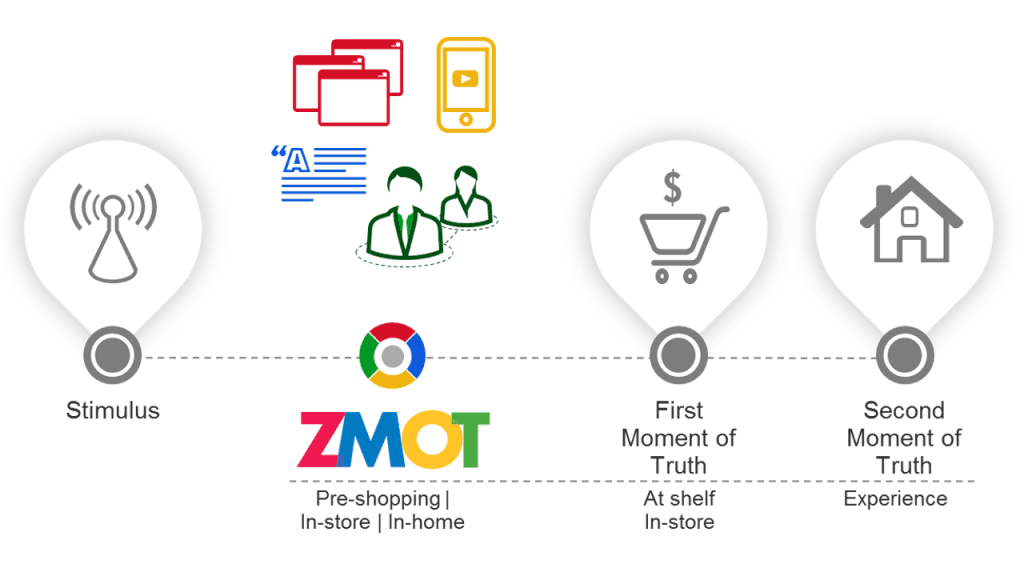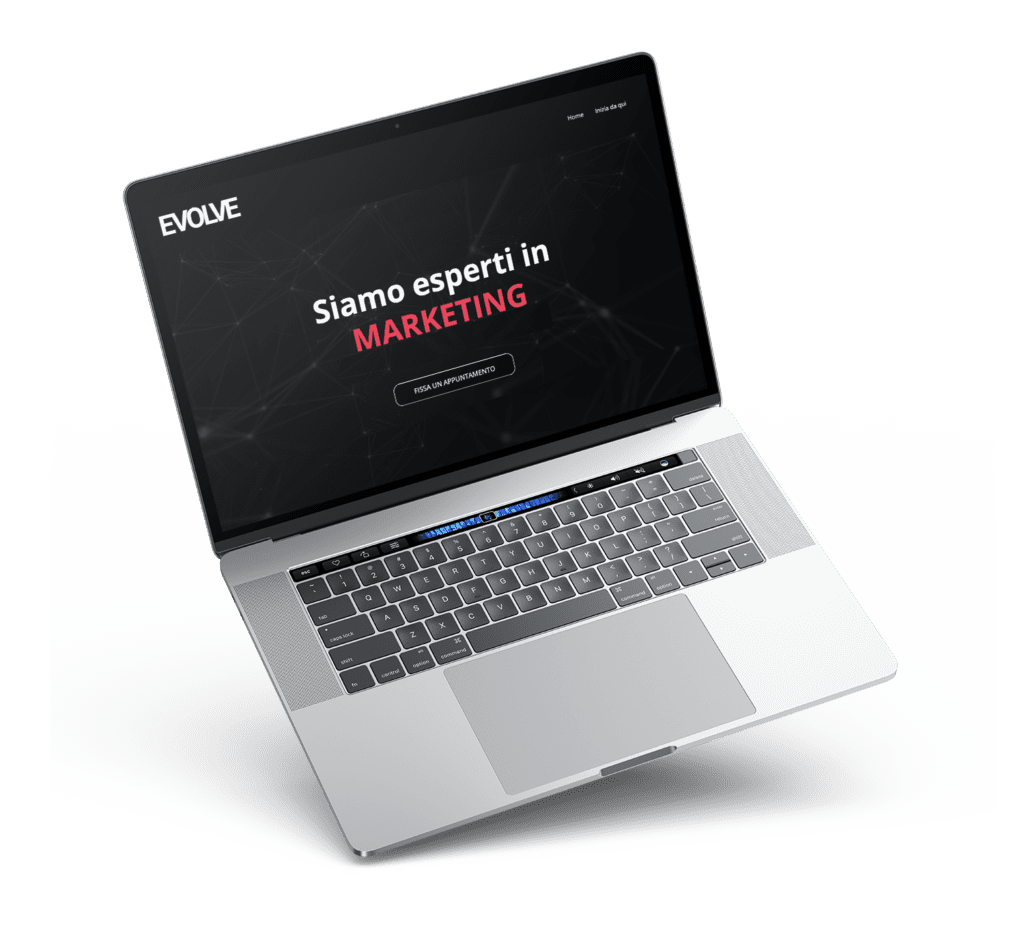Listen to the audio version of the article:
The website is the preferred starting platform for all marketing 2.0 initiatives for a local business.
Managing the online communication for a local business is a rather serious and complex issue that is often underestimated by creative advertising agencies. YOUR website must become a central asset of any customer acquisition activity more than a trade fair or any traditional advertising.
This is because, compared to some time ago when everything was analogue and people got their information through the yellow pages, today all these searches are carried out through the web.
In this article I have summarised the 5 rules that if followed will enable you to have an effective and useful website for your local business.
First of all, a clarification is needed: "what is a local business?".
A local business is defined as a business that is located in a geographically circumscribed area and that operates in the local area, regardless of how extensively your brand has expanded throughout the country. If you have a business with a head office, a production facility and a warehouse it is very likely that all your best customers are within a radius of 30 / 70km. The same applies to your competitors.
This guide is therefore effective for different types of business, whether they are aimed at a mass audience or a B2B audience. So you will benefit from this guidance whether you have:
- a restaurant
- a traditional shop
- a hotel
- a professional studio
- a gymnasium
- a swimming pool
- a beauty centre
- an industrial production activity
To begin with, we need to understand the role of the website in the world of the Internet in 2021.
Zero Moment of Truth
Google did a very interesting study a few years ago in which it explained through a Theory called: "Zero Moment of Truththe zero moment of truth, how the buying process worked before the advent of the internet and how it works after the advent of the internet.

Hyper-synthesising, we could say that before the advent of the internet the buying process was like this:
- Stimulus - A stimulus occurred (e.g. a product advertisement on TV)
- First Moment of Truth - The consumer visiting a shop would recognise the advertised product, at which stage the salesperson could play a key role in helping the potential customer acquire all the additional product information he or she needed to make a purchase decision.
- Second Moment of Truth - After purchasing, the consumer enjoyed the product for the first time and decided whether to buy it again in the future.
Therefore, if before the customer to evaluate the purchase of a product went to the shop to acquire the information, after the advent of the Internet is going to insert a new phase in the process, which as mentioned above is called "Zero Moment of Truth or the zero moment of truth.
This phase is inserted between "The stimulus" and the "First Moment of Truth".
In the Z.M.O.T. people who have received a stimulus become curious, and search for information to validate or reject a potential purchase.
The web is a great place to do research and find information, it has become so important that it comes before books, encyclopaedias and libraries, making all information just a few clicks away. That's why:
Not only is mandatory be present with a website if you want to survive but you have to activate a number of active strategies to be found
At this stage, people who have somehow come into contact with your product or your local business and therefore found out that you exist start to do research.
The first thing they do is go on Google to see that you actually have that product, what it is about, what the history of your company is, they check the reviews of your current customers, they look at the pictures of your shop.
This phase takes very little time, a few minutes, and these people have made up their minds about you, basically they have already decided whether or not to buy your products or services.
And through all this research, if they decide to visit your shop, they already know what they want to buy, they have already read the specifications, seen the photos, and know how other customers found it.
It's really strange but sometimes I have seen customers who are better informed and knowledgeable than the shop assistants.
So the Zero Moment of Truth can be summarised as the impact your online image has on the solution you offer your potential customers.
With this in mind, it is essential that if a potential customer is considering buying from you, he/she comes to your site and finds the information he/she needs to assess the purchase.
If you do not find the information you were looking for in that search, you are likely to be intercepted by a competitor's site because Google's algorithm is very efficient and always wants to give a clear and quick answer to people searching online.
So your website has to function properly and must be absolutely coordinated with everything you communicate In this regard, I invite you to check that you have activated the Google My Business tab for your activity, where you can record opening hours, photos, a description of your activity, the location of your activity on maps, and if integrated with e-commerce, you can also show the price of your products and the availability of your rooms if you are a hotel.
So it is essential that you master these tools because they are the new frontier of how your business should move forward.
Because like it or not, the market has changed. You can go along with change and evolve or face inevitable slow ruin.
If you do not conform to this standard, you are in fact leaving the field open for your competitors to go and take the conscious demand of people who want to buy from you and are looking for information.
For this reason I have summarised five points, which are the five golden rules and which must be followed in order to help you achieve results that will consolidate your success in facing the web productively, with awareness and vision for the future.
Rule 1 - Regain control
This is a fundamental step rather than a rule.
I will draw you a typical situation of an Italian SME that in the past had something done by the famous Italian web agency.
Usually your company has turned to a web agency of: "a cousin of yours"or a friend (the good one, the geek), or you gave everything to the guy who made your graphics and business cards.
And this person, in all probability, made you a site and then forgot about you and stayed there for 5-6-7-8-10 years.
After a while, maybe after reading this article, you say to yourself, I want to change the website!
With great regret you will discover absurd things like:
"He put a lock on my website". or "I made the website with a special language that only I can edit". and so you have to start again.
Sometimes there are agencies that even register the domain, i.e. the name of your website in their name, so you find that they have appropriated your intellectual property.
A lot of times there are companies that make websites and then they go bankrupt and they're not around anymore, so after a while you try to take over everything and you find out that the guy who made your website doesn't work anymore and he can't remember his credentials. Or even worse, he forgot to get your domain renewed and someone else bought it.
You had a website and now you have lost everything.
This is a small example of real cases I have seen with my own eyes in recent years.
This is what awaits you out there.
The 'web professionals' themselves are sometimes really charlatans.
So rule number 1 in this 'quagmire' is to regain control before it is too late.
Regaining power means finding the time and energy to take the agency or whoever made your site aside and tell them:
"I don't care if I go on with you or if I rely on someone else.
I want access to everything I own, i.e. my website, access to my domains, poi I have to access all the social channels so the Facebook account, the Instagram account, the business manager account, the LinkedIn account, the YouTube account, the G suite account. Everything, I need to have access to everything I have listed."
Be ready to request access even by legal means, because many times this is the level.
Another thing that needs to happen right away is that you need to regain control of all your campaign billing. If you have to run advertising campaigns on some platform (like Facebook or Google for example) make sure that the billing account is yours and not that of your agency.
You have to see what you spend and you have to pay for the advertising.
Otherwise you can't know that the agency on duty didn't mark up the price of the advertising spend.
Everything I pay must be done in my name and my direct expenditure.
The people and agencies that work with me I pay as external consultants working on my intellectual property.
Rule 2 - Always be reachable
It is essential in the light of what we said earlier, to always be reachable by the user who is going to look for information about my product or company online.
This does not mean that I have to be the first in the results for the search "pizza" if I am a pizza chef, but I have to make sure that if a potential customer searches for "Pizzeria Pasquale a Milano" and I am Pasquale a Milano, he absolutely has to find me. In some niche markets it is still possible to rank for generic search keys, and if it happens, well better.
But I have to be able to make sure at least that if the person searches for my brand or the name of my company, they absolutely have to find me there in the first position, they have to open the Google MyBusiness tab and there have to be photos, a link to the site, opening hours... updated.
And all this information must be consistent.
Not only does your website have to exist on Google, you have to make sure that it is always reachable.
There is no more room for improvisers who forget to renew their hosting.
Essere presenti sul web nel mondo di oggi è una cosa seria.
Rule 3 - Prepare a route with all the key information and have the final destination in mind
Ensuring that the information the user is looking for is on the site is crucial.
I am not talking about the magnificent history of your company and how everything has changed in the last seventy years.
If a user is considering the purchase of your product, he or she must be able to find all the information that will help him or her make the right choice. the choice he has to make.

Your website should be like a maze. Like in this photo above.
You have to get it to the word "Finish" without dropping the ball in the hole.
All paths (the pages and contents of the site) must lead to the final page which is the pre-determined action you want it to take.
If you can't get it there, it's all wasted time, just two words "Game Over".
If you communicate things wrong and badly you can bring even thousands of people to your website, the real challenge is to get the game going without making them fall into black holes (leave the site without the knowledge to buy).
It's a bit like when you go to Ikea and you have to go all the way around before you get to the checkout, or like when you go to Esselunga and without asking questions you go around the whole shop in the order they have prepared for you. You have to create a path of information that automatically goes out to answer all the questions you know might be going through his head and the only final destination of your maze will be to get the customer to act.
Whether this is a free consultation or buying a product in our shop.
I must already have in mind the path I want him to take and to do this, the best way is to start from the bottom, i.e. the action we want him to do.
If my aim is to bring this person for counselling, the first step might be to address a problem that the person perceives and to explain well the situation he/she is in, outlining what steps he/she should take to get out of the painful situation. For you, for example, the solution is simple. At the click of a button you can ask for a consultation with an expert. I take an hour of my time to analyse your situation and tell you exactly what you need to do to resolve the problem as quickly as possible and at the lowest possible cost.
If you can do this, it happens like magic.
You immediately convey competence, authority. You show by your calmness that you handle situations like these every day. When this happens, clients perceive your ability, your congruence, your professionalism.
From this point of view, it is much easier to invest money to solve a problem once and for all than to save money and continue to suffer in this situation where you are at the mercy of someone or something you do not fully understand.
So always start with the final goal in mind.
You decide what you want the user to do on your website.
Rule 4 - Signs of authority and safety
The small details are what really make the difference.
Earlier we saw how important and delicate this moment is.
Show off your authority with your credentials, display your awards, put up a photo gallery, show case studies.
And secondly add safety signals such as, a chat, make a toll-free number available, add a contact form.
Make sure you keep all communication channels monitored and respond promptly and in a comprehensive and professional manner.
They seem like trifles or details to be underestimated, but they are everything that makes all the difference at this stage.
It deals with all kinds of expenses that can lower the user's perceived risk when making a purchase.
Any tool that can make the customer feel that he is not being scammed but that he is in the right place and that he is a fool if he does not buy from you right now is a good investment.
Rule 5 - Plug in digitisation
Digitisation, as you will have realised in this article, is a serious matter.
It is certainly not simple and easy to read.
The truth is that this is a largely unknown issue even among 'experts in the field'.
It takes professionalism and courage to see this challenge in a positive light.
Technologies are constantly changing and one cannot really rely on information that becomes obsolete at the speed of light.
I realise that it can be very daunting for an entrepreneur to deal with an issue like this.
And most probably the first thing that comes instinctively to you is to turn everything off and continue as you have always done.
The problem is that today it is not only technology that is changing.
The market is also constantly changing.
Remember BlockBuster? Failed.
He was a colossus. And not dealing with change led him to the abyss.
If there is one thing technology does, it is speed things up.
What used to happen in years, now happens in months.
To meet this challenge you need help.
Help from people specialised in this.
I'm not talking about the usual village web agency that does your graphics.
What is needed here is people who study every day and test in the field what works and what doesn't.
There is no more room for manoeuvre. We can no longer afford to approach this change in an amateurish way.
If you are reading this article it is probably because you have an LLC or a spa.
If you have made the choice to structure yourself as a company, it is because you are certainly not an amateur.
Request a free consultation.
I'm reserving an hour of my time for you, and trust me, these days it's really hard to get it out of me.
What I expect from you in return:
At Evolve Marketing we only work with people who are looking for solutions.
We want ambitious clients and projects with development potential.
If you feel like starting a new digital adventure, click on the button below and ask for a consultation with me.
We will be happy to help you.



2 thoughts on “Le 5 regole fondamentali per il sito web di un’attività locale 2.0”
Grazie per tutte quelle informazioni!
I genuinely prize your work, Great post.